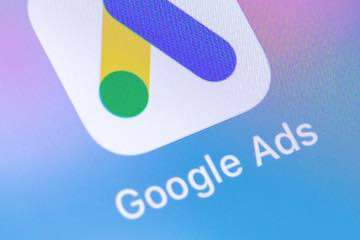Spending money on advertising is often seen by small business entrepreneurs as the domain of the ‘big guys’ due to affordability. This is a misconception.
Google advertising is ‘advertising-made-fair’. It’s the tool that allows a small business to stick its elbows out. If you are careful and dynamic with your strategy, you can compete with the big guys via PPC (pay per click) and ads placement.
The Starting Point
Once your website is SEO optimised, your website will improve in rankings, but the amplification from Google advertising will launch you into another stratosphere over time. Having your brand constantly exposed to potential customers builds trust. People only buy from brands they trust.
Google advertising is your digital billboard option, and it gets you noticed.
The Spend
Spending more does not make your digital advertising more effective, and THAT is why small businesses can outperform their bigger rivals.
Out strategising, being agile, and having quality copy and content is how you beat the big guys. Set a well-defined, realistic budget with a bit of wiggle room to start with PPC. Remember, you can’t pour it all into one marketing channel.
Answer these questions for your strategy:
- What is the total campaign spend?
- Will cost-per-click (CPC) deliver enough ROI (conversions and sales)?
- At what conversion rate (goals being achieved) will a campaign be profitable?
Goals
Goals are important for calculating budget and ROI. Here are some example goals:
- Number of clicks
- Cost per click (CPC)
- Click-through rate (CTR)
- Leads generated
- Cost per lead
- Cost per conversion
- Quality score (this is a key goal)
Not all goals are quantifiable. Increasing brand exposure on search engines to build trust is not measurable, but there are plenty of other important quantifiable goals.
Do you know your competitor’s goals? Try and understand what they’re doing with their ads and placement. Checking in on their PPC via a popular keyword search and adjust yours accordingly.
The Message
Your ad copy must inspire people to click. It has to be top quality. Be succinct and impactful with every carefully selected word. Make sure you know your USP, solve a problem for the customer, and include a call to action (CTA).
Run A/B campaigns whereby you test two campaigns simultaneously and see which one works best.
Keywords
Your ads need to appear when someone searches for a term related to your product, so keyword research and usage are vital.
Long-tail keywords are budget-friendly. The drawback with more detailed terms is that most searches are not more than two words. The benefit is that bigger competitors drive up keyword prices so you can wiggle up the search results cheaper long-tail keywords.
High-volume, pricey keywords can be targeted with focused bids, at certain times, on specific locations and other considerations.
Conclusion
Instead of focussing on ‘pennies’, focus on measuring. Data is your key to paying less. Use Google Analytics and the Google Ads console. How are visitors finding your site? What pages are popular? What searches bring more traffic? Tweak your campaigns to gain maximum success and patterns.
Google Ads will make advertising suggestions on why your impressions, click-throughs or costs might have changed.
Analyse your data and act on it fast!
If you want help with easily creating Google Ads advertising campaigns alongside your Facebook and Instagram ads, contact our knowledgeable team. Spend less time tweaking ads and more time making money.





















